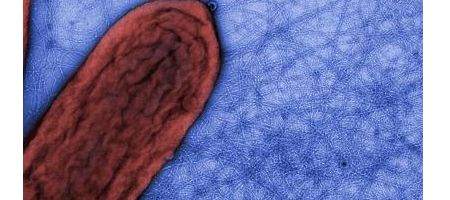A bacterium called Geobacter sulfurreducens contains microbial nanowires that can efficiently transmit electricity, holding great promise for nanotechnology and bioelectronics.

A team of physicists and microbiologists at the University of Massachusetts says their dicovery could lead to cheaper, nontoxic nanomaterials for biosensors and solid state electronics that interface with biological systems.
Lead microbiologist Derek Lovley says the bacterial filaments, known as microbial nanowires, can move charges as efficiently as synthetic organic metallic nanostructures – and over remarkable distances, thousands of times the bacterium’s length.
“The ability of protein filaments to conduct electrons in this way is a paradigm shift in biology and has ramifications for our understanding of natural microbial processes as well as practical implications for environmental clean-up and the development of renewable energy sources,” says Lovley.
The discovery could lead to a range of new conducting nanomaterials that are living, naturally occurring, nontoxic, easier to produce and cheaper than man-made technologies. They could even allow the use ofelectronics in water and moist environments.
The bacterial nanowires are tunable in a way not seen before, the UMass Amherst researchers found. It’s possible to manipulate theirconducting properties by simply changing the temperature or regulating gene expression to create a new strain, for example.
And by introducing a third electrode, a biofilm can act like a biological transistor, able to be switched on or off by applying a voltage.
Another advantage Geobacter offers, says the team, is its ability to produce natural materials that are more eco-friendly and cheaper than man-made versions, many of which require rare elements.
Says Lovley, “We’re basically making electronics out of vinegar. It can’t get much cheaper or more ‘green’ than that.”






